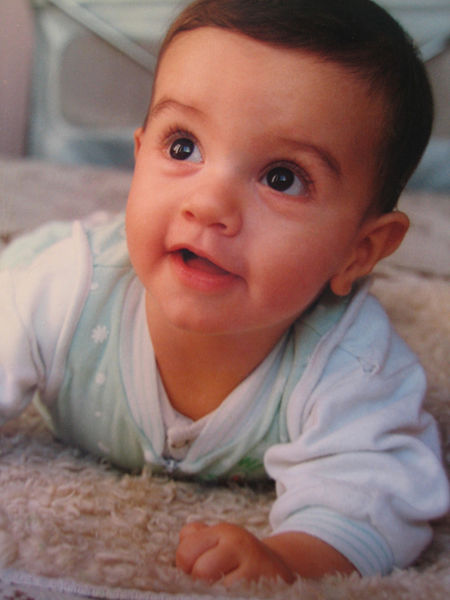Tennis is a sport that combines physical ability with mental acuity, making it a fantastic activity for children to engage in from a young age. Introducing tennis to infants and toddlers can help develop their coordination, motor skills, and social abilities. However, one of the most crucial aspects of beginning this journey is selecting the right tennis racket. In this article, we will explore the importance of choosing the right infant tennis racket, covering factors such as size, weight, material, and grip, as well as offering tips for making an informed decision.
The Importance of Size

When it comes to tennis rackets for infants, size is paramount. A racket that is too large or heavy can hinder a child’s ability to learn the fundamentals of the game. Here are some reasons why size matters:
- Proper Technique: A correctly sized racket allows young players to develop proper strokes and techniques. Using an oversized racket can lead to poor form, which can carry on into their later years of playing.
- Injury Prevention: An oversized or overly heavy racket can cause discomfort or even injury to a child’s developing muscles and joints. A lightweight, appropriately sized racket minimizes this risk.
- Encouragement to Play: If a child struggles to handle a racket, they may become frustrated and lose interest in the sport altogether. A racket that fits well can enhance their enjoyment and willingness to play.
Weight Matters: Finding the Right Balance

The weight of a racket significantly impacts a child’s ability to swing it effectively. Here’s what you should consider:
- Lightweight Options: For infants and toddlers, lightweight rackets are essential. Typically, rackets for young children weigh between 5 to 7 ounces. This makes it easier for them to handle and swing the racket without becoming fatigued.
- Building Strength: As children grow and develop strength, they can transition to slightly heavier rackets. Choosing a racket that is too heavy too soon can discourage them from playing.
- Material Considerations: Rackets made from materials like aluminum or composite materials are often lighter than wooden rackets, making them more suitable for young beginners.
Grip Size: A Key Factor for Comfort and Control

The grip size of a racket is another critical factor that can influence a child’s performance and comfort. A racket with an incorrect grip size can lead to difficulties in control and increased risk of injury. Here’s how to choose the right grip:
- Small Hands: Infants have smaller hands, which means they require a smaller grip size. Most junior rackets have grips ranging from 3.5 to 4 inches. It’s essential to consider this when making your selection.
- Testing the Grip: To check if the grip size is appropriate, have the child hold the racket. They should be able to comfortably wrap their fingers around it without excessive strain.
- Adjustability: Some rackets come with adjustable grips or grip tape that can be altered as the child grows. This can provide added value and save you from frequent replacements.
Material Matters: Durability and Performance

The material of the racket plays a role in both durability and how the racket performs. Here are some common materials used in infant tennis rackets:
- Aluminum: Lightweight and durable, aluminum rackets are ideal for beginners. They can withstand the wear and tear of young players.
- Composite Materials: These rackets often combine different materials to enhance performance while keeping the weight low. They offer a good balance of strength and flexibility, making them suitable for young children.
- Wood: Wooden rackets are generally heavier and are less common for infants. They may be more suitable for older children who have developed a stronger swing.
Case Studies: The Impact of Choosing the Right Racket

Research and anecdotal evidence suggest that selecting the right racket can profoundly affect a child’s experience and performance in tennis. A study conducted by the U.S. Tennis Association found that children who used appropriately sized rackets showed a 30% improvement in their swing accuracy compared to those who played with oversized rackets.
Additionally, a case study focusing on a youth tennis program in California demonstrated that children who used lightweight, junior-sized rackets were more likely to continue playing tennis beyond the initial introduction phase. The program noted a retention rate of over 70% among participants who were equipped with suitable rackets, compared to just 40% for those who were not.
Tips for Choosing the Right Infant Tennis Racket

Selecting the right tennis racket for your infant can feel overwhelming. Here are some practical tips to simplify the process:
- Consult Experts: Speak to coaches or trainers at local tennis clubs. They can provide valuable insights and recommend specific brands or models that work well for young players.
- Try Before You Buy: If possible, let your child hold and swing different rackets before making a purchase. This hands-on approach allows you to find the right fit for their comfort and style.
- Consider Brand Reputation: Brands that specialize in children’s sports equipment, such as Wilson or Head, often have a range of options specifically designed for young players.
- Focus on Future Growth: While it’s essential to find a racket that fits your child now, consider options that allow for some growth or adjustment, so you won’t have to replace it too soon.
Choosing the right infant tennis racket is a pivotal step in fostering a child’s love for tennis and ensuring their development in the sport. Factors such as size, weight, grip, and material all play significant roles in how a child experiences the game. By understanding these elements and making informed decisions, parents can set their children on the path to not just becoming skilled players, but also lifelong lovers of the game. The right racket can lead to improved technique, greater enjoyment, and a reduced risk of injury, ultimately making tennis a rewarding and enriching sport for young children. Remember, the right start can make all the difference in a lifelong journey of sportsmanship and fitness.